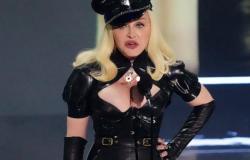
William Wyler’s monumental, Oscar-winning film never shows the face of Jesus to the viewer. But where does this uniqueness of staging come from?
Easter classic if there is one, there are films that you have to see once in your life and one of them is Ben Hur, the historical epic directed by William Wyler in 1959 – it was released in Spain in 1960 – that made history at the Oscars, becoming the most awarded film in history, with a total of eleven awards. 64 years later, no other film has managed to beat the record, but there are two that have managed to equal it: Titanic and The Lord of the Rings: The Return of the King, both with eleven awards each.
With a duration of 212 minutes, three hours and 20 minutes, The film is on par with great Hollywood epics and is a regular feature of these festivities that are celebrated these days, so no one will be surprised to know that it is the film chosen by 1 of RTVE for broadcast today, Thursday, March 28, 2024, at 4:00 p.m.
Starring Charlton Heston and Stephen Boyd, this epic biblical peplum marked an era for several generations, while several of its sequences, such as the chariot race, are unequivocally part of cinema history. In 2016, a remake was released, also under the title Ben Hur, but he was very far from repeating his success.
Centered on the character of Judah Ben-Hur (Heston), a wealthy Judean prince has been betrayed and sent to the galleys by his childhood friend, the Roman tribune Messala (Boyd), Ben Hur Not only is it the story of revenge of the protagonist in his attempt to regain his freedom, but It also and above all tells, at its core, the story of Jesus.
Throughout the workthe trajectory of the protagonists is closely linked to that of Christ, to the point that the feature film begins with his birth and ends just after his crucifixion.
However, the representation of Jesus in Ben Hur It differs radically from those we are used to seeing on the screen, due to a rather striking specificity of the staging: Never during the film do we see the face or hear the voice of Christ.
This particularity, which nevertheless offered the feature film one of its most beautiful scenes, was born from a British law of the time, which simply prohibited the physical or vocal representation of Jesus in cinema, unless he was the main character of the movie. American actor Claude Heater, who played him with his back turned in Ben-Hur, did not even appear in the credits.
However, Although this regulation could have seriously hindered its staging, director William Wyler knew how to turn it into a strength: Throughout the feature film, the representation of Christ will only happen through the viewer’s imagination, and above all through the masterful interpretation of the rest of the actors.
Good proof of this, as our colleagues from AlloCine, is the sequence in which Ben-Hur crosses the desert, chained with the other galley slaves, and collapses on the ground, exhausted and totally thirsty. At this moment, we only see Christ’s hand giving Judah a drink, and his silhouette standing between the latter and a Roman officer. The power of the scene comes exclusively from the fascinated expression of Charlton Heston and the astonished face of the actor who lends his features to the centurion. Enough to leave an indelible memory in the viewers of the film and offer Ben Hur one of his most notable moments.





